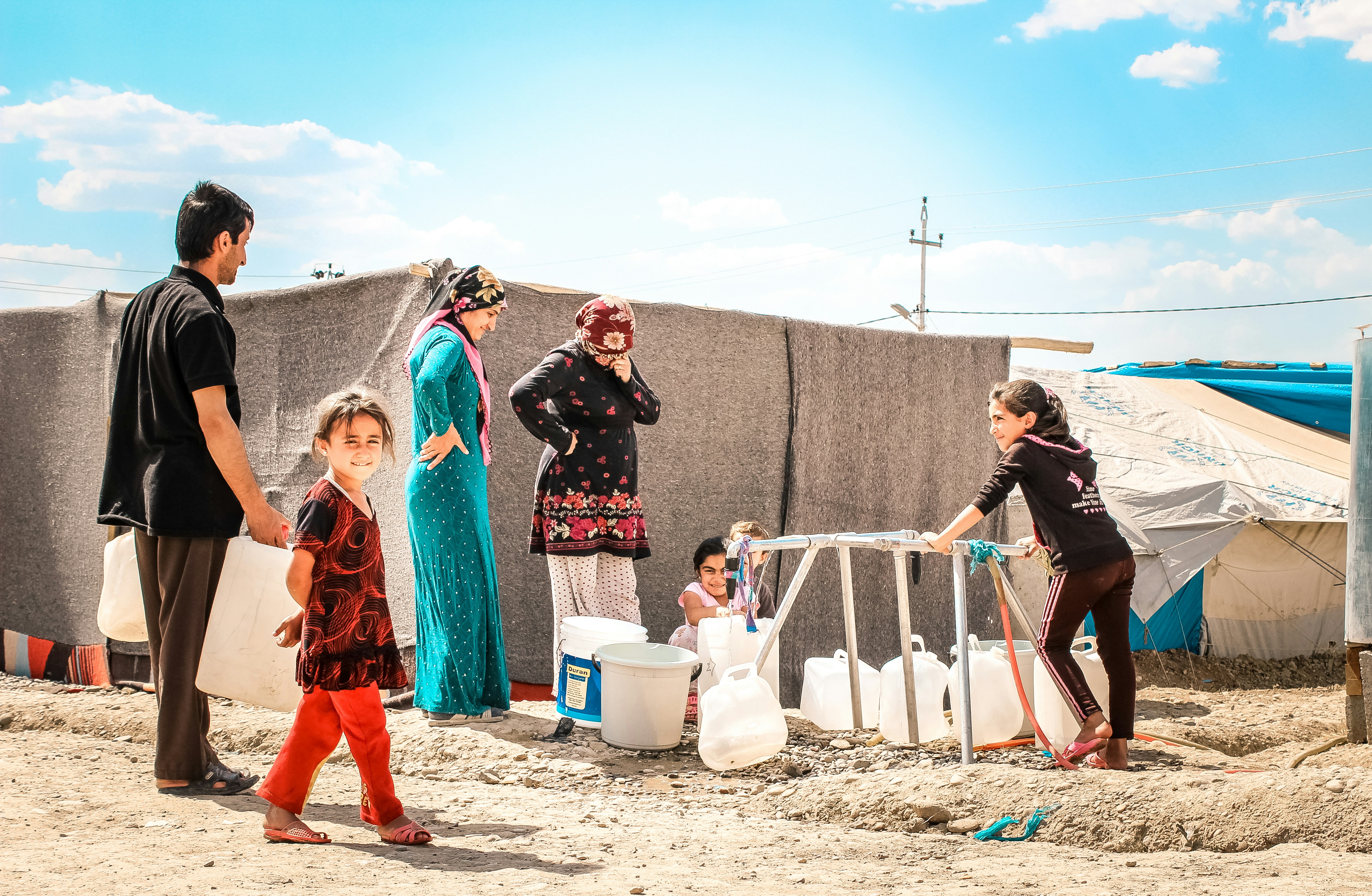Israel’s Ongoing Military Strikes Against Iran: Recent Developments

Photo by Leo_Visions on Unsplash
Overview of the Recent Strikes
The recent military actions taken by Israel against Iran have captured global attention, marking a critical development in the ongoing tensions between the two nations. Over the past 24 hours, Israeli forces have executed a series of targeted strikes aimed primarily at military installations and critical infrastructure within Iran, specifically in cities such as Tehran and Isfahan. These operations are reportedly part of Israel’s broader strategy to neutralize perceived threats emanating from the Iranian regime.
According to multiple sources, the strikes began late in the evening, characterized by precision targeting that aimed to minimize collateral damage while effectively incapacitating Iranian military capabilities. Notably, installations associated with missile development and drone manufacturing were among the primary targets hit. The choice of these locations underscores Israel’s commitment to curbing Iran’s advancements in military technology, which have raised alarms in Tel Aviv and the broader international community.
As the hours progressed, the frequency of the strikes increased, indicating a concerted effort by Israel to maintain pressure on Iran. Reports indicate that aerial bombardments were complemented by electronic warfare tactics aimed at disabling Iranian defense systems. This combination of conventional and unconventional warfare strategies highlights the complexity of the military landscape in the region, as Israel seeks to assert its dominance while managing international scrutiny.
Furthermore, the impact of these operations extends beyond immediate military targets; they also have implications for Iranian civil infrastructure, potentially affecting communications and supply lines. This multifaceted approach raises questions about the potential for escalation and the West’s response, particularly given the delicate geopolitical balance in the Middle East. As Israel continues its operations, the situation remains dynamic, warranting close observation from analysts and policymakers alike.
Statements from Israeli Defense Forces
In a recent press conference, IDF spokesperson Effie Deffrin articulated the Israeli Defense Forces’ stance regarding their ongoing military operations against Iran. He emphasized that these actions stem from a necessity to protect national security and regional stability. The backdrop of these operations involves longstanding concerns about Iran’s influence in the Middle East, particularly regarding its nuclear ambitions and proxy groups that pose threats to Israel.
Deffrin detailed the strategic rationale behind targeting specific locations in Iran. He mentioned that the operations aim to disrupt supply lines and military infrastructure that could potentially be used to harm Israel. The spokesperson stated that the IDF has been closely monitoring developments in Iran, evaluating the threats, and assessing potential impacts on Israeli territories. This proactive approach is seen as vital to maintaining deterrence against Iranian aggression and its affiliated militias.
Furthermore, Deffrin highlighted that the IDF is focused on preventing the transfer of advanced weaponry to militant groups such as Hezbollah, which resides close to Israeli borders. The operations are part of a broader strategy to ensure that these groups do not receive enhanced capabilities that could escalate regional tensions. By addressing these threats preemptively, Israel seeks to assert its defense policies while minimizing risks to its citizens.
As the situation evolves, Deffrin assured the public that the IDF would continue to take necessary actions to safeguard the country. He reiterated the government’s commitment to confront any developments that undermine Israel’s security, particularly those emanating from Iran. This ongoing military stance reflects Israel’s determination to respond decisively to perceived threats in an increasingly volatile regional landscape.
International Reactions and Implications
The ongoing military strikes by Israel against Iran have elicited a varied response from the international community. Statements from global leaders reflect a spectrum of perspectives, often influenced by political alliances and regional interests. Many Western nations, particularly the United States, have expressed support for Israel’s right to defend itself while urging restraint to prevent escalation. This conditional endorsement underscores a complex relationship where security concerns intersect with strategic imperatives in the Middle East.
In contrast, countries in the Middle East have reacted with profound concern. For instance, neighboring states such as Lebanon and Syria have condemned the strikes, framing them as acts of aggression that threaten regional stability. This reaction highlights the precarious balance of power in the region, where military action by one nation often leads to heightened tensions among others. Furthermore, the rhetoric from Iranian officials has intensified, with threats of retaliation which could result in a cycle of violence that affects not only Israel but also nearby nations.
The implications of Israel’s military actions extend beyond immediate criticisms and affect broader international relations. There is a potential for diplomatic isolation as some nations may choose to align more closely with Iran, viewing Israel’s strikes as a violation of sovereignty. Additionally, this situation may influence ongoing discussions regarding nuclear agreements, particularly as Iran’s nuclear program has long been a contentious issue in global diplomacy.
As tensions mount, the regional stability that has been tenuous at best faces further challenges. The international system must grapple with how to address these developments, balancing security, humanitarian concerns, and the need for dialogue. Observers of Middle Eastern politics will continue to monitor the unfolding dynamics in the context of Israel’s ongoing military presence in the area and its impact on diplomatic efforts.
Historical Context and Future Outlook
The relationship between Israel and Iran has been marked by significant tensions since the 1979 Iranian Revolution, which led to the establishment of the Islamic Republic. Prior to this, Israel and Iran maintained a relatively stable relationship, largely due to mutual geopolitical interests. However, the rise of a theocratic regime in Iran fundamentally shifted this dynamic, positioning Israel as a key adversary in the eyes of Iranian leaders, who view the Israeli state as an existential threat.
Throughout the 1980s and 1990s, hostilities have been fueled by various factors, including Iran’s support of militant groups that oppose Israel, such as Hezbollah and Hamas. The turn of the millennium introduced further complexities, particularly with Iran’s nuclear ambitions. Israel perceives a nuclear-armed Iran as a direct threat not only to its national security but to the stability of the entire Middle Eastern region. This concern has led to a series of preemptive measures, including cyber attacks, airstrikes, and international lobbying efforts aimed at curbing Iran’s nuclear capabilities.
Looking forward, the trajectory of this conflict remains uncertain. Should Iran continue its nuclear program, it is likely that Israeli military strikes could escalate, potentially drawing in other regional and global powers. This scenario might lead to a broader military conflict that would have far-reaching implications. Conversely, diplomatic initiatives, such as renewed negotiations over Iran’s nuclear program, could pave the way for a temporary easing of hostilities, although the deep-seated mistrust between these nations poses significant challenges to such efforts.
Ultimately, the ongoing confrontation between Tel Aviv and Tehran represents not just a bilateral dispute but a central element of the broader geopolitical landscape in the Middle East. Future developments will significantly impact not only Israel and Iran but also their allies and the stability of the region as a whole.







